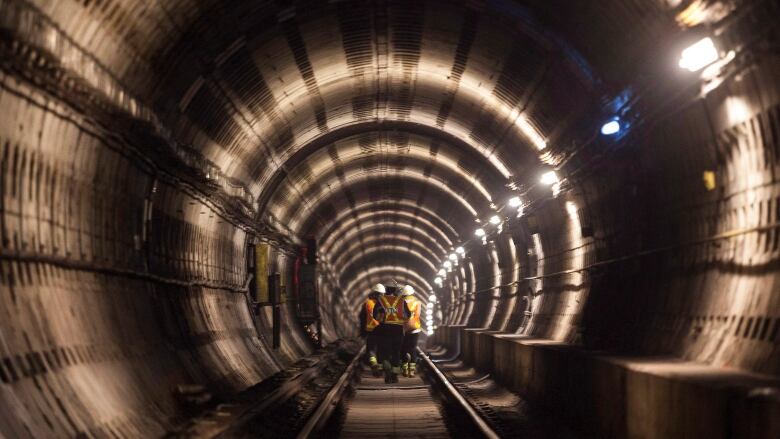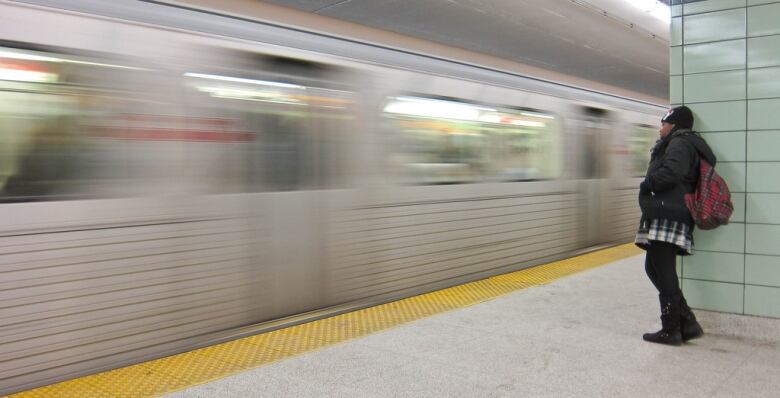Union slams TTC over subway air pollution study, raises concerns about worker health
Airborne pollutants in subway system up to 10 times higher than outside air, study found

The largest TTC workers' union has slammed the transit commission over new study results revealing high air pollution levels within the city's subway system which they fear could be causing long-term health impacts among workers.
The research, publishedon Tuesday in the journalEnvironmental Science & Technology, found airborne pollutants on trains and platforms in the city's subway systemwere up to 10 times higher than outside air.
"This has potentiallong-term effects on the people that work there ... these workers have been working down there, in some cases, 30 to 40 years," said Kevin Morton,secretary-treasurerof Local 113, which represents around 11,000 active TTC workers.
"They've been breathing this stuff in."
A team of researchers from Health Canada, McGill University and the University of Toronto comparedToronto's subway lines toVancouver'sSkyTrainandMontreal's Metro systems back in 2010 and 2011. Toronto'sstations and trains were found to have the highest levels of air pollution.
Theyfound an average of 100 micrograms of pollutants per cubic metre within the Torontosystem, which study co-authorGreg Evans, aUniversity of Toronto engineering professor, comparedto"a typical day in Beijing."

The pollutants were made up of high concentrations of metal, which Evans said could be due to the abrasion of the wheels on the tracks.
"We believe a lot of the particles that we detect in the air come in because of the abrasion of the wheels on the tracks," Evans said.
That comes as no surprise to Morton, who questioned why it took an external study to shine light on something that's been long-discussedinternally.
"For years and years and years, our union and the other unions have addressed the fact that brake dust and iron dust from the wheels was potentially cancer-causing, as well as respiratory issues, asthma, all the other associated illnesses," he said.
Morton said the union isasking for an immediate meeting with the TTC and other major bodies, including the ministries of health, labour, and the environment.
"How long did the TTC know, when did the TTC know, and what has the TTC done to protect the workers and riders over the years?" he asked.
Particles can get into lungs, bloodstream
Dr. John Molot, an environmental health expert at Women's College Hospital, said he "wouldn't be surprised" if there was a health impact on TTC workers.
He said theairborne particles discussed in the new study thosesmaller than 0.00025 centimetres can get deep into the lungs and be absorbed into the bloodstream.
"These particles land on the surface of the bronchial tubes and trigger a response from the immune system to try and clear it up," he said.
They can also lead to various types of diseases and biological changes, which can impact the respiratory system, central nervous system, and brain function, according to Molot.
He stressed that studying TTC workers is crucial to knowing how their exposure to subway air pollution is impacting their health.
"They have to compare these workers to people who have much less exposure," he said.
In a statement, the TTC stressed theresearch published on Tuesday was conducted years ago, at a time when the commission had already started taking stepsto improve air quality on the trains and reduce certain pollutants in stations.
That includes the introduction of Toronto Rocket trains on Line 1 theYonge-University-Spadinaline which have cleaner air thanks to newer ventilation systems.

TTC should make study 'results public'
As for the impact on both riders and workers, the TTC said it is indeed planning to conduct abroader subway air quality study.
"The information we have is from 1995 and we know it needs updating," the statement reads. "We will work with our employees through joint health and safety committees on that study this year."
TTC spokesperson Stuart Green also noted that the research looked at samples from 2010 and 2011. Since that time, the commission has improved its filtration and HVAC systems, which Green said should have already improved air quality.
In past studies conducted in 1977, 1980 and 1995 the levels of pollutants were found to have decreased over time, Green said.
"The 1995 study found that none of the 280 samples taken were above the occupational exposure limits for employees," he said in an email. "It was determined that the subway air quality would not affect the health of employees or customers who do not have pre-existing serious respiratory conditions."
JessicaBell, executive director of advocacy group TTCRiders, said it's good the TTC is taking steps to reduce air pollution, but saidstudying whether or not that's making an impact on both riders and workers is key, stressing that"they need to make those results public."
Morton also wants to see concrete answers, for the sake of workers who spend so much of their lives working in the underbelly of the city.
"You as a rider might be on the TTC for 15 to 40 minutes," he said.
"How about walking in the tunnels? How about working in the tunnels? How about an operator who does an eight or ten hour shift and has to breathe in that air?"
With files from Julia Whalen












_(720p).jpg)


 OFFICIAL HD MUSIC VIDEO.jpg)
.jpg)



























































































